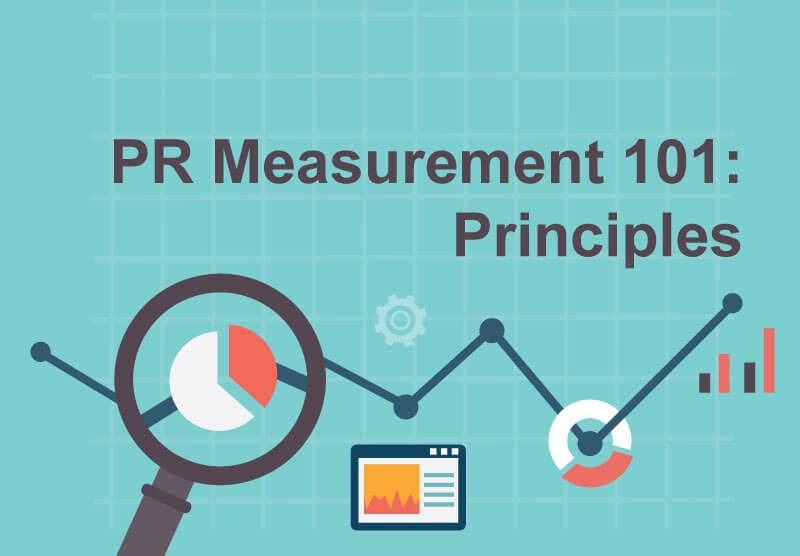
Even today in 2018, effectively measuring public relations programs is still a challenge to many PR practitioners. To overcome this challenge, we have decided to write a three-part blog series (Principles, Essentials, Advancement) that outlines key measurement areas that can help every PR practitioner institute and practice a measurement program for any type of client.
This first blog post in this series will layout a handful of principles to PR measurement that we apply to each and every PR measurement program. Below is a list of essential PR measurement principles in order to effectively measure the success of your PR program:
- Understand your key business objectives and how they align with your communications program.
- Set SMART goals that align with your key business objectives. SMART stands for Specific, Measurable, Attainable, Results-focused, and Time-bound.
- Strategies and Tactics. Understand the difference and how they support your goals and objectives.
- Assign KPIs (key performance indicators) that align with your strategies, tactics, and goals, which also align with your key business objectives.
- Benchmark longitudinally (over time). Set your KPIs from ground zero and then determine how often you want to check-in on the data to track movement. If your media volume is low (below 100 mentions per month) we would recommend quarterly check-ins and reporting.
- Use data as a tool for course correcting. Sure, having big shiny numbers that point to the success of a campaign is great, but it’s not everything. It is just as important to look at the less than impressive numbers to determine what’s not working and how you can correct the PR tactics and strategies moving forward.
- Stay clear of PR tool overload. There are seemingly countless media measurement tools to choose from when it comes to media monitoring and measurement. Due diligence and select tools/platforms that best support your needs and budget. Don’t feel pressured by sales reps. Some of my favorite PR-centric tools include LexisNexis Newsdesk and CoverageBook.
- Metrics should not be vain. We will cover metrics in the next blog post of this series but provide data beyond “vanity metrics” (Impressions, AVEs, UMVs, Share of Voice) and to metrics that point to coverage quality and business impact.
- Look beyond the numbers. Do not report only data. Data without context is meaningless, which is why dashboards can be dangerous. It’s very important to provide the proper context to your data points, as well as key insights and strategic program recommendations with your analysis.
Do you have any PR measurement principles that you follow? Any questions? Please Tweet us at @sparkpr!
About the Author

Alex is currently the Digital Marketing and Analytics Manager at SparkPR, a full-service integrated marketing agency that focuses on Consumer technology & B2B markets. He was previously a Senior Analyst at SparkPR, a Senior Analyst at Eastwick, a Social and Digital Strategy Intern at H3O Communications, and a Jr. Social Media Analyst at the award-winning communications agency, WCG. Alex’s experience of working in startup size analytical and integrated marketing departments has led to his current passion for building such departments. Alex takes a data-first approach to his marketing strategies because proving business impact is of utmost importance.
Congratulations @sparkchain! You have received a personal award!
Click on the badge to view your Board of Honor.
Downvoting a post can decrease pending rewards and make it less visible. Common reasons:
Submit
Congratulations @sparkchain! You received a personal award!
You can view your badges on your Steem Board and compare to others on the Steem Ranking
Vote for @Steemitboard as a witness to get one more award and increased upvotes!
Downvoting a post can decrease pending rewards and make it less visible. Common reasons:
Submit